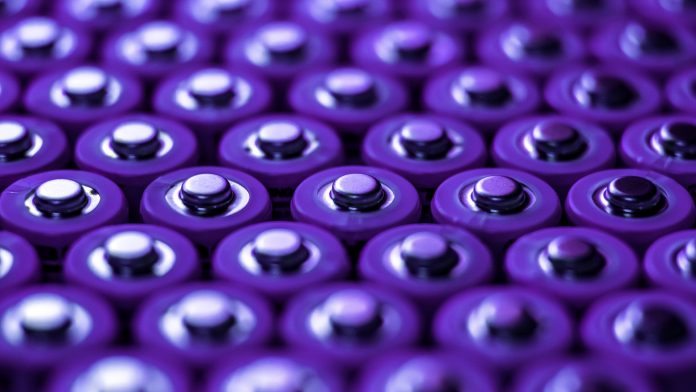A research team from the University of Waterloo has discovered a new solid electrolyte that presents significant advantages.
What is required to create the ‘perfect’ battery?
Scientists have two primary goals regarding creating the ‘perfect’ battery: create a device that can store a great deal of energy and do so safely. Currently, a majority of batteries contain liquid electrolytes, which are potentially flammable.
As a result, solid-state lithium-ion batteries, which consist of entirely solid components, have become increasingly appealing to scientists. This is because they offer a combination of higher safety and increased energy density, which is how much energy the battery can store for a given volume.
This electrolyte, composed of lithium, scandium, indium, and chlorine, conducts lithium ions well but electrons poorly. This is an essential combination to create an all-solid-state battery that functions without considerably losing capacity for over a hundred cycles at high voltage (above 4V) and thousands of cycles at intermediate voltage.
The chloride nature of the electrolyte is crucial to its stability at operating conditions above 4V, which means it is suitable for typical cathode materials that form the mainstay of today’s lithium-ion cells.
“The main attraction of a solid-state electrolyte is that it cannot catch fire, and it allows for efficient placement in the battery cell; we were pleased to demonstrate stable high-voltage operation,” explained Linda Nazar, a Distinguished Research Professor of Chemistry at UWaterloo and a long-time member of JCESR.
What are scientists adapting from the old batteries?
Current reiterations of solid-state electrolytes focus heavily on sulphides, which oxidise and degrade above 2.5V. Therefore, they require the incorporation of an insulating coating around the cathode material that operates above 4V. This impairs the ability of electrons and lithium-ions to move from the electrolyte and into the cathode.
“With sulphide electrolytes, you have a kind of conundrum — you want to electronically isolate the electrolyte from the cathode, so it doesn’t oxidise, but you still require electronic conductivity in the cathode material,” Nazar commented.
While Nazar’s group was not the first to devise a chloride electrolyte, the decision to swap out half of the indium for scandium based on their previous work proved to be a winner in terms of lower electronic and higher ionic conductivity.
“Chloride electrolytes have become increasingly attractive because they oxidize only at high voltages, and some are chemically compatible with the best cathodes we have,” Nazar added. “There has been a few of them reported recently, but we designed one with distinct advantages.”
One chemical that is essential to the ionic conductivity lay in the material’s crisscrossing 3D structure is called a ‘spinel.’ The researchers had to balance two competing desires: to load the spinel with as many charge carrying ions as possible, and to leave sites open for the ions to move through.
“You might think of it like trying to a host a dance — you want people to come, but you do not want it to be too crowded,” Nazar said.
How will scientists continue to develop this electrolyte?
Researchers have observed that the ideal situation would be to have half the sites in the spinel structure occupied with lithium, while the other half remained open, but they have noted that creating that situation is difficult.
Additionally, scientists need to assure that the electrons could not move easily through the electrolyte, as this would trigger its decomposition at high voltage. “Imagine a game of hopscotch,” Nazar explained. “Even if you are only trying to hop from the first square to the second square, if you can create a wall that makes it difficult for the electrons, in our case, to jump over, that is another advantage of this solid electrolyte.”
Scientists have noted that it is not yet clear why the electronic conductivity is lower than many previously reported chloride electrolytes, but it helps establish a clean interface between the cathode material and solid electrolyte; this is largely responsible for the stable performance even with excessive amounts of active material in the cathode.
The research team consists of contributors from the University of Waterloo, Canada, (UWaterloo) who are members of the Joint Center for Energy Storage Research (JCESR), headquartered at the US Department of Energy’s (DOE) Argonne National Laboratory.
A paper based on the research, ‘High areal capacity, long cycle life 4 V ceramic all-solid-state Li-ion batteries enabled by chloride solid electrolytes,’ appeared in the January 3 online edition of Nature Energy.









